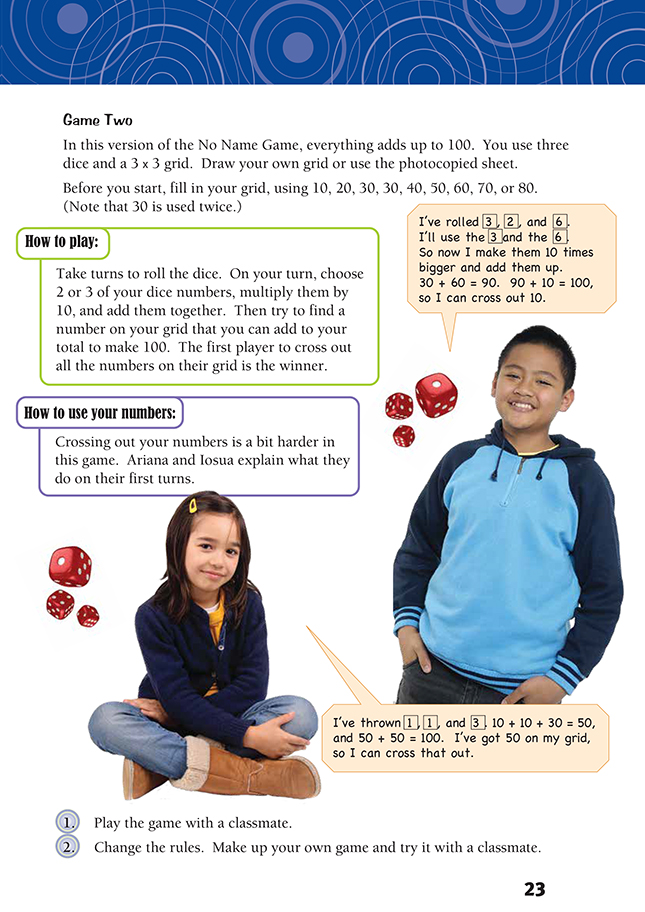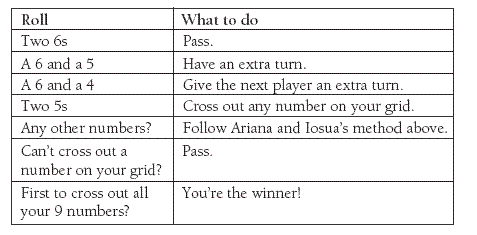This is a level 2 number activity from the Figure It Out series. It relates to Stage 4 of the Number Framework.
Click on the image to enlarge it. Click again to close. Download PDF (170 KB)
name compatible numbers to 10
know pairs to 100
Number Framework Links
Students can solve the calculations in these problems using advanced counting (stage 4) and early additive (stage 5) strategies.
Use these games to:
• develop the students’ knowledge of counting in tens to 100 (place value, stage 4)
• develop the students’ knowledge of addition to 10 and multiplying by 10 (basic facts)
• help the students who are beginning to use early additive strategies (stage 5) to become confident at this stage in the domain of addition and subtraction.
3 or more classmates
FIO, Levels 2-3, Number Sense and Algebraic Thinking, Book One, The No Name Game, pages 22-23
3 dice
Copymaster of the Grid
Games
These games build knowledge of compatible numbers to make the tidy number 10 and then the tidy number 100. Until the students build this knowledge, they will have to use counting methods to solve most problems. Once they have acquired this knowledge, they will be able to use it with part–whole strategies for addition and subtraction.
Game One
Introduce the first game through the interaction between Ariana and Iosua. After the students have played the game and worked out the rules, ask them to suggest a name that would suit.
Game Two
This game involves a significant extension to Game One. The students may wish to find a new name for this version of the game after playing it a few times. Note that 30 has been used twice because (long term) the score of 70 comes up more often than any other score. As an extension, ask: Why is 90 not used on the scoring grid? (The smallest total from the dice is 1 + 1 = 2 or, in this case, 10 + 10 = 20. 100 – 20 = 80, so 80 is the highest number that can be crossed off the grid.)
For question 2, the students could vary the tidy number targets. For example, a target of 200 is possible, provided the numbers on the grid start from 20 rather than 10 and do not exceed 170. Whatever variations they come up with, the students need to check that all 9 numbers on their grid can be used.
Extension
You could extend Game Two by using only 2 dice and adding some special rules for dice throws:
After the students have played the game using these rules, ask: Why are there special rules for 6 + 6, 6 + 5, 6 + 4, and 5 + 5? (All of these scores give a total of 100 or greater, so there is no remainder when taken away from 100.)
The students could then try the game with a number such as 130 as the target and work out how this would simplify the dice throw rules for 2 dice.
Answers to Activities
Game One
1. A possible set of rules is:
• Each player has their own grid.
• Take turns to throw the 3 dice.
• Add up the total of your dice.
• See if you can make 10 by adding the total of your dice to a number on your grid.If you can, cross out that number on your grid. If you can’t, you miss your next turn.
• The first player to cross out any 4 numbers is the winner.
2. Practical activity
Game Two
1. A game that involves adding numbers to make 100
2. Rules will vary.


